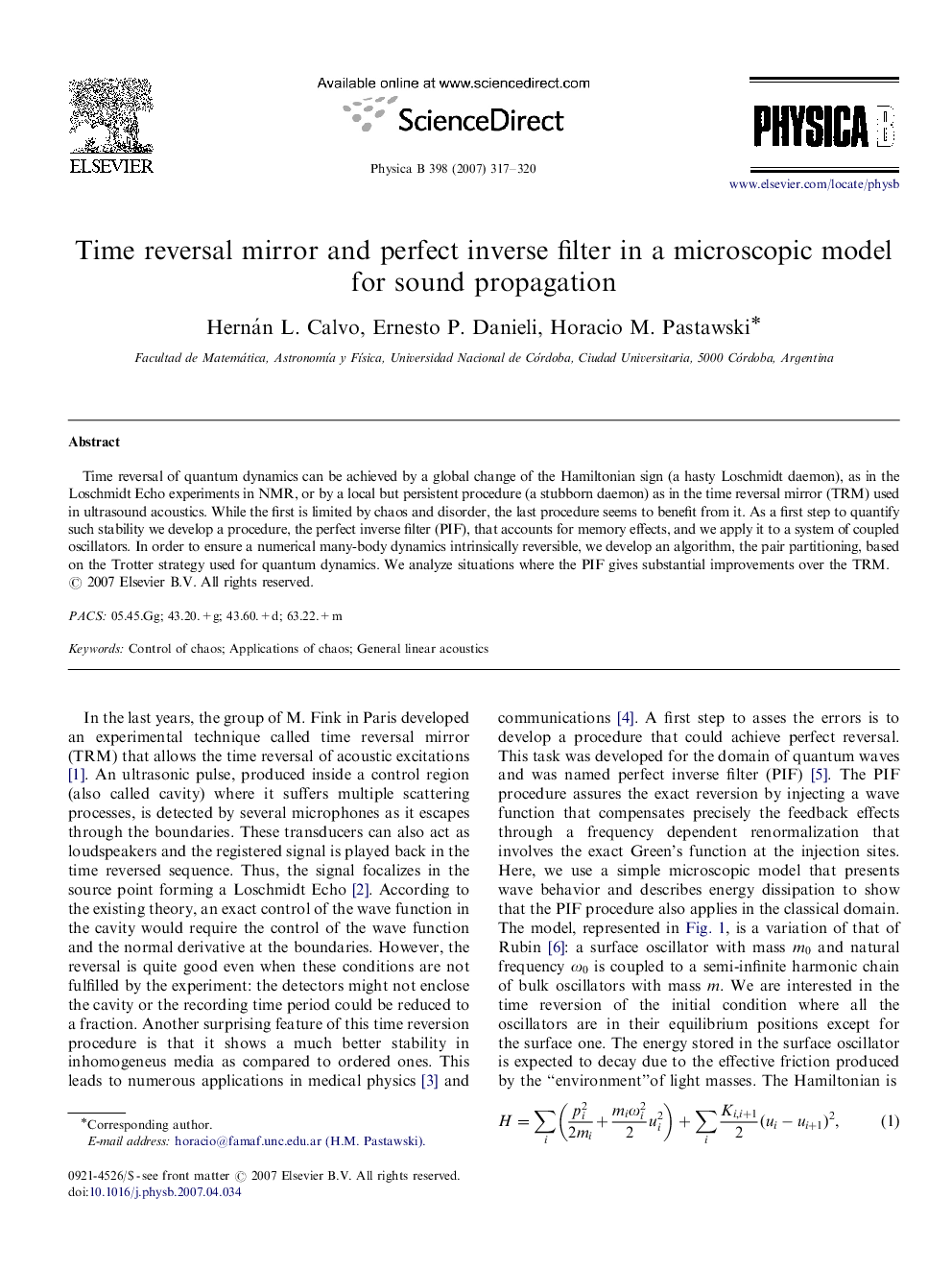| Article ID | Journal | Published Year | Pages | File Type |
|---|---|---|---|---|
| 1815361 | Physica B: Condensed Matter | 2007 | 4 Pages |
Abstract
Time reversal of quantum dynamics can be achieved by a global change of the Hamiltonian sign (a hasty Loschmidt daemon), as in the Loschmidt Echo experiments in NMR, or by a local but persistent procedure (a stubborn daemon) as in the time reversal mirror (TRM) used in ultrasound acoustics. While the first is limited by chaos and disorder, the last procedure seems to benefit from it. As a first step to quantify such stability we develop a procedure, the perfect inverse filter (PIF), that accounts for memory effects, and we apply it to a system of coupled oscillators. In order to ensure a numerical many-body dynamics intrinsically reversible, we develop an algorithm, the pair partitioning, based on the Trotter strategy used for quantum dynamics. We analyze situations where the PIF gives substantial improvements over the TRM.
Related Topics
Physical Sciences and Engineering
Physics and Astronomy
Condensed Matter Physics
Authors
Hernán L. Calvo, Ernesto P. Danieli, Horacio M. Pastawski,
